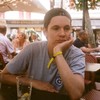Image: François Dettwiler
This article originally appeared on VICE France.Over the past century or so, spies across the globe have parlayed our innate fascination with food into something beyond a satisfying supper. For members of the international intelligence community, food has a variety of uses: It can be a weapon, a way of passing on messages, and a means of blending into the crowd.That’s not to say that food is a foolproof way of evading detection. In September 1940, German spy Karl Heinrich Meier arrived in the coastal English village of Lydd, having snuck across the Channel aboard a fishing trawler the night before. Attempting to blend in with his new surroundings, Meier ordered a pint of cider at ten in the morning, either forgetting or being completely unaware of the fact that British licensing laws at the time prohibited the sale of alcohol before midday. He was arrested, tried, and eventually hanged at London’s HMP Pentonville in December that year. Meier wasn’t the only German spy to fall foul of British culinary traditions that year. Another agent was rumbled after bratwurst – a distinctly German sausage – was found in his bag. Both spies were part of Operation Lena, a German intelligence gathering plot.The Second World War was a terrible time to attempt subterfuge if you were unable to disguise your food preferences. British spies sent into Mediterranean countries risked making their presence all too apparent through their distinctly bland eating habits. According to historian and author Peter Taylor, this compelled MI6 to consider producing chocolate bars laced with garlic, in an attempt to smell like the locals. It didn’t get past the prototype stage, but the point remains: Adapt to the culinary customs of the country you’re operating in, and you’ll save yourself some grief.Spies have long made good use of restaurants, too. Over time, certain eateries have acquired an indelible aura of secrecy around them, making them perfect places for spies to settle down for a long lunch.“Restaurants and cafés are vital for espionage,” said former CIA operative Amaryllis Fox in an interview for NPR in 2019. “They give you a place to meet the people you’re looking for. Sometimes, these meetings are accidental, but most of the time they’re just contrived to look like an accident.”Moscow restaurant Aragavi opened in 1938 and served up Georgian food to a clientele that included actors and chess grandmasters as well as KGB officers. So beloved was Aragavi by Russia’s shadowy state forces that it was rumoured that Lavrentiy Beria, the head of Stalin’s secret police, designed the restaurant himself. Even Kim Philby, one of the most famous spies of the 20th century, was an Aragavi regular in the years after he defected to the USSR at the height of the Cold War. In the 21st century, spies are more likely to pop into fast food spots to conduct business. They’re open late, they’re easily identifiable, and they’re pretty anonymous, making them ideal spaces to plot and plan. In that same 2019 interview, Fox recalled a CIA instructor who taught agents how to communicate via Starbucks gift cards: "He gives one [gift card] to each of his assets and tells them, 'If you need to see me, buy a coffee.' Then he checks the card numbers on a cybercafé computer each day, and if the balance on one is depleted, he knows he's got a meeting. Saves him having to drive past a whole slew of different physical signal sites each day [to check for chalk marks and lowered window blinds]. And the card numbers aren't tied to identities, so the whole thing is pretty secure."One of the stranger espionage stories of recent years involves the FBI, a peanut butter sandwich and a 42-year-old nuclear engineer named Jonathan Toebbe. Earlier this year, Toebbe found himself in an American court, accused of sharing and selling secrets about US nuclear submarine plans with someone he believed was a representative of a foreign government. The person in question turned out to be an FBI employee, who planned to bust Toebbe. After a lot of negotiation, Toebbe arranged an initial delivery of files in exchange for $10,000 in cryptocurrency. He proceeded to slide a 16GB memory card into a peanut butter sandwich, according to legal documents obtained by the Associated Press. Further transactions took place, with Toebbe stuffing his information into a packet of chewing gum at one point. He was arrested on the 9th of October this year, charged with treason, and now awaits trial in prison. On a lighter note, let us consider the fact that without food-loving spies, those of us who live in the northern hemisphere wouldn’t be able to pop to the supermarket for a punnet of strawberries whenever the mood strikes. The fruit we eat today are descended from plants brought back from Chile by Amédée François Frézie — a spy sent there by the French royals at the turn of the 18th century. His mission was to study defence fortifications – not local flora – but he was distracted by the fragrant fruit instead. France’s spying loss is our culinary gain.
Advertisement
Advertisement
Advertisement
